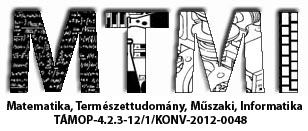Association of vitamin D receptor gene polymorphisms/haplotypes with Sjögren's syndrome
Előadás adatai
Introduction
Sjögren’s syndrome is a common systemic autoimmune disease that primary affects the exocrine glands and leads to xerophthalmy and xerostomy. Extraglandular manifestations (EGMs) may also be found in a group of patients. Since vitamin D has several immunomodulatory effects through vitamine D receptor (VDR). Several studies have reported that genetic variations of VDR might be a risk factor for the development of autoimmune diseases. VDR polymorphisms have not been reported in conjunction with Sjögren’s syndrome yet.
Aim
The frequencies of Vitamin D receptor polymorphisms (BsmI, TaqI, ApaI and FokI) were investigated in patients with Sjögren’s syndrome, and to determine whether these VDR gene polymorphisms are associated with the disease.
Patients and methods
In our study, 105 Sjögren’s syndrome patients [53 with glandular symptoms (GS) and 52 with EGMs] and 93 healthy controls were tested for VDR gene polymorphism genotypes. Genomic DNA was isolated from peripheral blood sample. Then, BsmI polymorphism was analysed by real-time PCR using TaqMan probe. The TaqI, ApaI and FokI polymorphisms were identified by the polymerase chain reaction followed by restriction fragment length polymorphism (PCR-RFLP) method.
Results
In all Sjögren’s syndrome patients, the frequencies of VDR BsmI genotypes were 40.51% bb (GS: 46.15%, EGMs: 34.6%), 47.41% Bb(GS: 40.38%, EGMs: 55.7%), and 12.6% BB(GS: 13.46%, EGMs: 9.6%); the distribution of FokI genotypes were 34.28% FF(GS: 33.96%, EGMs: 34.62%), 47.62% Ff(GS: 45.28%, EGMs: 50%), and 18.1% ff(GS: 20.76%, EGMs: 15.38%); the frequencies of ApaI genotypes were 20% for AA(GS: 22.64%, EGMs: 17.31%), 48.57% for Aa(GS: 39.62%, EGMs: 57.69%) and 31.43% for aa(GS: 37.74%, EGMs: 25%); the frequencies of TaqI genotypes were 37.14 % TT(GS: 41.51%, EGMs: 32.69%), 47.62% Tt(GS: 41.51%, EGMs: 53.85%) and 15.24% tt(GS: 16.98%, EGMs: 13.46%). All four genotypes did not show significant difference compared with healthy controls. Also there is no significant difference between two patients group either.
Conclusions
The current findings suggest that VDR polymorphisms were not associated with Sjögren’s syndrome in Hungarian population.
Támogatók: Támogatók: Az NTP-TDK-14-0007 számú, A Debreceni Egyetem ÁOK TDK tevékenység népszerűsítése helyi konferencia keretében, az NTP-TDK-14-0006 számú, A Debreceni Egyetem Népegészségügyi Karán folyó Tudományos Diákköri kutatások támogatása, NTP-HHTDK-15-0011-es A Debreceni Egyetem ÁOK TDK tevékenység népszerűsítése 2016. évi helyi konferencia keretében, valamint a NTP-HHTDK-15-0057-es számú, A Debreceni Egyetem Népegészségügyi Karán folyó Tudományos Diákköri kutatások támogatása című pályázatokhoz kapcsolódóan az Emberi Erőforrás Támogatáskezelő, az Emberi Erőforrások Minisztériuma, az Oktatáskutató és Fejlesztő Intézet és a Nemzeti Tehetség Program



